
Geddy Lee Weinrib is a Canadian musician, best known as the lead vocalist, bassist, and keyboardist for the rock group Rush. Lee joined the band in September 1968 at the request of his childhood friend Alex Lifeson, replacing original bassist and frontman Jeff Jones. Lee's solo effort, My Favourite Headache, was released in 2000.

Rush was a Canadian rock band that primarily comprised Geddy Lee, Alex Lifeson (guitar) and Neil Peart. The band formed in Toronto in 1968 with Lifeson, drummer John Rutsey, and bass guitarist/vocalist Jeff Jones, whom Lee immediately replaced. After Lee joined, the band went through several line-up changes before arriving at its classic power trio lineup with the addition of Peart in July 1974, who replaced Rutsey four months after the release of their self-titled debut album; this lineup remained intact for the remainder of the band's career.
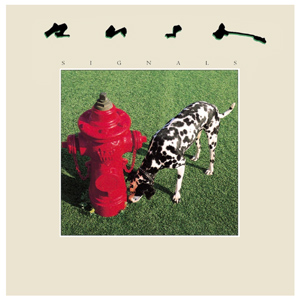
Signals is the ninth studio album by Canadian rock band Rush, released on September 9, 1982 by Anthem Records. After the release of their previous album, Moving Pictures, the band started to prepare material for a follow-up during soundchecks on their 1981 concert tour and during the mixing of their subsequent live album Exit...Stage Left. Signals demonstrates the group's continuing use of synthesizers, sequencers, and other electronic instrumentation. It is the last album produced by their longtime associate Terry Brown, who had worked with them since 1974.
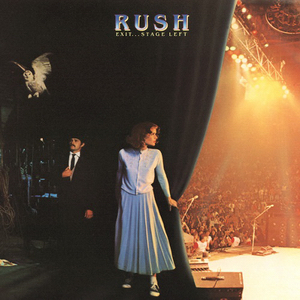
Exit... Stage Left is the second live album by the Canadian rock band Rush, released as a double album in October 1981 by Anthem Records. After touring in support of their eighth studio album Moving Pictures (1981), the band gathered recordings made over the previous two years and constructed a live release from them with producer Terry Brown. The album features recordings from June 1980 on their Permanent Waves (1980) tour, and from March 1981 on their Moving Pictures tour.

Rush in Rio is a three-disc live album by Canadian band Rush, released on October 21, 2003. The album is also available as a two DVD set. With the exception of the last two tracks on the third disc, the album was recorded at Maracanã Stadium in Rio de Janeiro on the final night of the Vapor Trails Tour. The other two tracks were taken from previous shows on the same tour. "Between Sun & Moon" was recorded at the Cricket Wireless Pavilion, Phoenix, Arizona, on September 27, 2002, and "Vital Signs" was recorded at the Colisée Pepsi, Quebec City, Quebec, on October 19, 2002.

A Show of Hands is a live album by the Canadian rock band Rush, released in 1989. The band released a video of the same name, originally on VHS and LaserDisc, the same year. A DVD version was released as part of a box set in 2006, and as an individual DVD in 2007. In 2015 it was reissued after being remastered by Sean Magee at Abbey Road Studios following a direct approach by Rush to remaster their entire back catalogue.

Test for Echo is the sixteenth studio album by the Canadian rock band Rush, released on September 10, 1996 on Anthem Records. It was the final Rush album to be co-produced by Peter Collins. The band supported the album with a world tour in 1996 and 1997, after which they went on a five-year hiatus following the deaths of drummer Neil Peart's daughter and wife, and would not record again until 2001.

Different Stages is a live album by Canadian rock band Rush, released in 1998. The bulk of the first and second discs were recorded at the World Music Theatre in Tinley Park, Illinois, during the 1997 Test for Echo tour. Five other songs from various stops along the tour were included and three songs from the 1994 Counterparts tour. The third disc is taken from a performance at the Hammersmith Odeon in London during the A Farewell to Kings tour in 1978.

"Tom Sawyer" is a song by Canadian rock band Rush, originally released on their 1981 album Moving Pictures as its opener. The band's lead singer, bassist, and keyboardist, Geddy Lee, has referred to the track as the band's "defining piece ... from the early '80s". It is one of Rush's best-known songs and a staple of both classic rock radio and Rush's live performances, having been played on every concert tour since its release.

The Spirit of Radio: Greatest Hits 1974–1987 is a compilation album by Canadian rock band Rush, released on February 11, 2003. It includes many of the band's most popular songs from their Mercury Records era, but does not feature any material from their third album Caress of Steel. A special edition of the album included a DVD containing music videos for several songs, including "Mystic Rhythms".
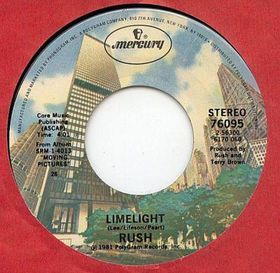
"Limelight" is a song by Canadian progressive rock band Rush. It first appeared on the 1981 album Moving Pictures. The song's lyrics were written by Neil Peart with music written by Geddy Lee and Alex Lifeson. "Limelight" expresses Peart's discomfort with Rush's success and the resulting attention from the public. The song paraphrases the opening lines of the "All the world's a stage" speech from William Shakespeare's play As You Like It. The band had previously used the phrase for its 1976 live album. The lyrics also refer to "the camera eye", the title of the song that follows on the Moving Pictures album.

Snakes & Arrows is the eighteenth studio album by Canadian rock band Rush, released on May 1, 2007, by Anthem Records. After their R30: 30th Anniversary Tour ended in October 2004 the band took a one-year break, during which they agreed to start work on a follow-up in January 2006. The album was recorded in five weeks with co-producer Nick Raskulinecz, a fan of the group who was praised by each member for his approach and technique. It contains three instrumental tracks, the most on any Rush album.

"Fly by Night" is a song by Canadian rock band Rush. It was released in 1975 and is the title track of their second studio album. The music was written by bassist Geddy Lee and the lyrics were penned by drummer Neil Peart. Peart wrote the song about his first trip away from home. In 1971, at 18 years old, he left behind his small-town Canadian life and flew to England. Lee sings the lead vocals and on the song's middle eight, his voice is fed through a Leslie speaker.

Snakes & Arrows Live is a live double CD and DVD by Canadian band Rush. The CD was released on April 14, 2008, in the UK and on April 15, 2008, around the world. It was also released on DVD and Blu-ray on November 24, 2008. The material was taken from two performances during the first leg of the Snakes & Arrows Tour, recorded at the Ahoy Arena in Rotterdam, Netherlands on October 16 and 17, 2007. The album features nine of its 27 tracks drawn from Snakes & Arrows.
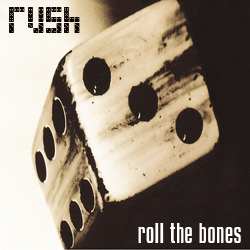
"Roll the Bones" is a song by the Canadian rock band Rush. It was released as the second single from their 1991 album of the same name.

"Dreamline" is a song by the Canadian rock band Rush. It was released as a single and on their 1991 album Roll the Bones. The song peaked at number one on the U.S. Mainstream Rock Tracks chart, and was a staple for live performances by Rush, having been performed on every tour from the inaugural Roll the Bones Tour until the 2010 and 2011 Time Machine Tour, when it was dropped. It was performed during the subsequent Clockwork Angels Tour, where it was accompanied by the Clockwork Angels string ensemble and a video with a dedication to Neil Armstrong. It was dropped again on the 2015 R40 Tour. In live performances, the bridge was extended to incorporate a solo by Alex Lifeson.

"Stick It Out" is a song and single by the band Rush from their 1993 album Counterparts. The song debuted at number one on the Billboard Album Rock Tracks chart, becoming the band's only number one debut of their five chart-toppers. The song also reached number one on the RPM Cancon chart.

"Headlong Flight" is the second single from Canadian rock band Rush's 19th studio album, Clockwork Angels. It was released to radio stations and for online preview on April 19, 2012, and became available digitally and on disk April 24, 2012. A lyrics video was also made available on YouTube. In an interview with Rolling Stone, Geddy Lee commented on the song:
'Headlong Flight' was one of those songs that was a joy to write and record from beginning to end. Alex [Lifeson] and I had blast jamming in my home studio one day before the second leg of the Time Machine tour, and I did not revisit that jam until a year later. Alex and I assembled the song to be an instrumental and its original title was 'Take That Lampshade Off Yo Head!,' but once we saw the lyrics Neil [Peart] had written, I knew that the spirit of the lyrics matched the instrumental perfectly and it was just a matter of making them fit and writing the melodies.
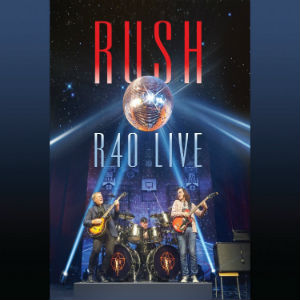
R40 Live is the name for both the last live audio album release, and the live video release, of Canadian rock band Rush's R40 Live Tour. Both formats were released November 20, 2015. The performances were filmed on June 17 and 19, 2015, at Air Canada Centre, Toronto, Canada. The performance of "The Camera Eye" featured on Disc 3 was recorded in Kansas City, Missouri on July 9, 2015. “Clockwork Angels” was recorded in Denver, Colorado on July 11, 2015, and "The Wreckers" was recorded in Buffalo, New York on June 10, 2015. Additionally, "Losing It" was recorded in Los Angeles on August 1.




















